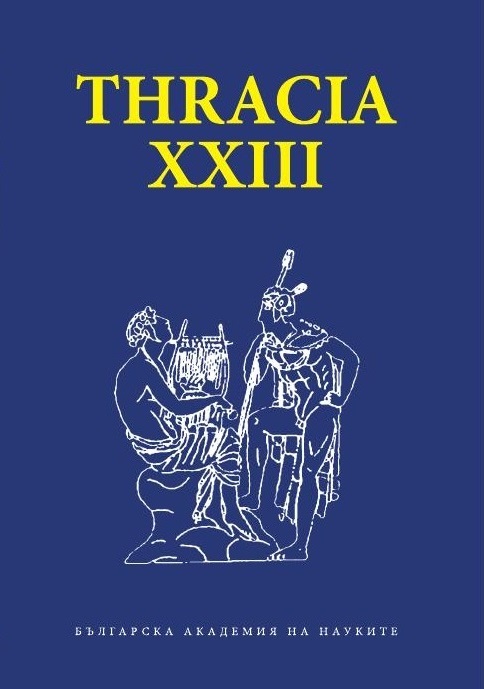„Палеобалкано-западноанатолийската общност“ – необходимият термин
“Palaeobalkan-Westanatolian Community”: the Required Term
Author(s): Alexandar PortalskySubject(s): History, Cultural history, Comparative history, Ethnohistory, History of ideas, Local History / Microhistory, Social history, Ancient World
Published by: Институт за балканистика с Център по тракология - Българска академия на науките
Keywords: Mycenaean Thrace; Thracian-Phrygian contact zone; Thracian-Trojan ethnocultural community; Palaeobalkan-westanatolian community
Summary/Abstract: The paper justifies the use of the term Palaeobalkan-westanatolian community. The community is defined as over-lingual and culturally identifiable, but it demonstrates similarities in the political systems too.The community becomes identifiable from the second half of the 2nd millennium BC., slightly blurred in Hellenistic and Roman period, but its strong fundamentals hold until the end of antiquity. The announcement of Constantinople as an imperial capital plays a big role for that. It, in turn, is conditioned by the existence of this core that ensures the centuries long existence of Byzantium. Late manifestations of Palaeobalkan-westanatolian community are well documented and easily noticeable. A more significant question is since when we may identify this community and what might cause its formation. It`s appearance is related with the presence of similar natural conditions and the common to a great extent religion, as well as with the eased communication around the three seas - the Aegean, Sea of Marmora and Black sea.The community includes different languages, not all of which are ethnically close. Within the community appear some of the earliest protopoleis and cities in Europe. The Greek polis was born here too. Polis suggests a different type of culture and polity in comparison to the monarchy, but both are formed gradually and would have hardly strengthen without interaction with the other political formations in Palaeobalkan-westanatolian community. They do not simply accept greek apoikies, they need a symbiotic relationship with them. The easy migration of local population in the colonies shows that the way of life in them is known and acceptable for non-greeks. All that will emerge as a symbiosis between polis and monarchy in the era of Hellenism and in the Roman Empire, has already been tested within the Palaeobalkan-westanatolian community and has proven its viability.The term summarizes many previous observations made by many scientists. The term “Mycenaean Thrace” shows diachronic proximity between societies in Mycenaean Greece and Thrace from the early Iron Age. I can add also the parallels between Thrace and Phrygia synthesized in the term “Thracian-Phrygian contact zone” and “Thracian-Trojan ethnocultural community.” Subsequently the term “Palaeo-Balkan community” is introduced.Observations on ancient authors show awareness of the existence of such a community. It is expressed most often through mythological genealogy of eponyms of different ethnic groups that show the connections between them. This tradition began by Herodotus and increased during the Hellenistic era. Finally I offer examples which suggest the existence of a Palaeobalkan-westanatolian community in the understanding of kingship and cults.
Journal: Thracia
- Issue Year: 2018
- Issue No: 23
- Page Range: 101-116
- Page Count: 16
- Language: English, Bulgarian
- Content File-PDF

